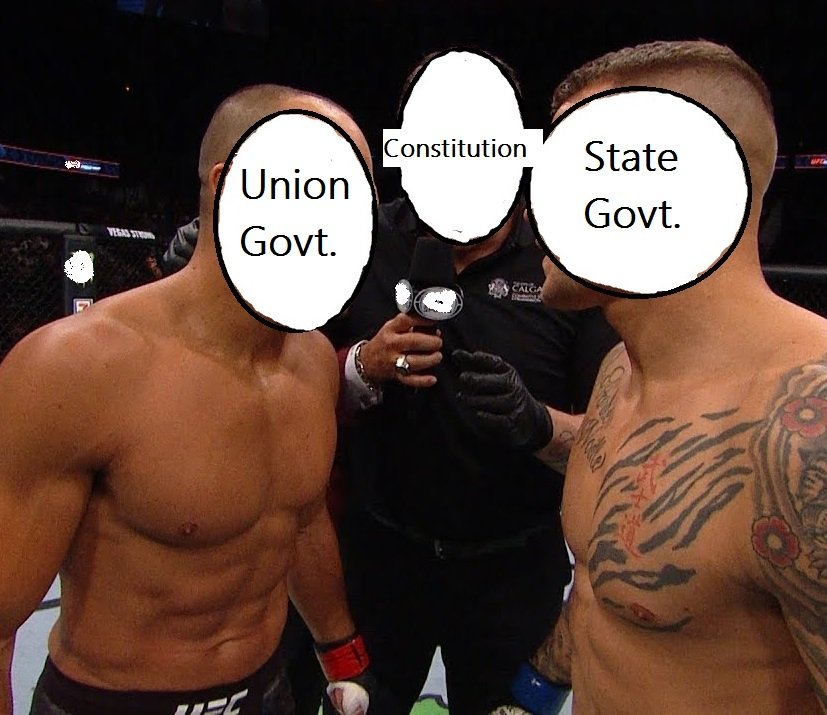Table of Contents
What Does Anti-terror Law Mean?
Anti-terror laws are laws that are enacted to control terrorism in a country or a particular state. The nature of these laws (mostly draconian) is usually determined by the state or regimes under which they are made.
One of the important characteristics of anti-terror law is that it gives huge and overriding powers in the hands of the executive and also places special powers in the hands of the central government to make rules.
In India, our Parliament has so far enacted three anti-terror laws, namely-
- The Terrorist and Disruptive Activities (Prevention) Act 1985 and 1987 (TADA),
- The Prevention of Terrorism Act 2002 (POTA) and
- Unlawful Activities Prevention Act 1967 (UAPA).
In this article, I will discuss the specificities of TADA. I also aim to look at it critically and analyse its nature by looking it through the glasses of the regimes under which it was enacted.
When and Why was TADA enacted?
TADA is one of the first laws to be enacted especially to address ‘terrorist’ and other ‘disruptive’ activities.
The Terrorist and Disruptive Activities (Prevention) Act (TADA) was enacted in May 1985. This was specifically enacted in the context of the separatist movement for Khalistan in Punjab, initially for two years, and was also confined to Punjab itself.
Eventually, with its extensions, the law turned out to be more stringent than it was initially, and also its area of functioning expanded from Punjab to cover almost every part of the country.
Over 95 percent of its citizens came under the purview. (Ujjwal k. Singh, 2012).
What Powers did TADA confer to the state?
TADA brought exceptions in the ordinary law.
It facilitated prolonged detention, arrests without warrant, extension in the period of police and judicial custody, and also in the period within which the charge sheet was drawn. Under the ordinary law, Article 22(2) of the Indian constitution, states that any person who has been arrested or detained needs to be brought before the nearest Magistrate within a period of 24 hours of arrest, which excludes the time of travel from the place of arrest to the Court.
Under the ordinary law, Section 167 of the Criminal Procedure Court (CrPC), the Magistrate has been authorized to extend the detention for a maximum period of 15 days after which the accused must be brought before the Magistrate, who can extend the detention further for 15 more days only if there are adequate grounds for the extension.
This pre-trial detention couldn’t be extended beyond the period of 60 days, even if the investigation of the offence has not been completed.
With the introduction of TADA, Section 167 of the CrPC has been modified. Section 20(4)(b) of TADA facilitates the extension of 60 days detention to one year, which implies the long-term detention of suspects without warrants.
It also made a departure from the ordinary law, of section 436 to 450 of chapter XXXIII of the CrPC which stated the guidelines for granting bails.
The granting of bail was put under the subject of the public prosecutor who was given the privileged to oppose an application for release under section 8(a) of TADA and also under section 8(b) the court needed to be satisfied on reasonable grounds that the applicant wasn’t guilty and would not commit a crime while on bail.
The Indian Constitution provides us with specific grants and safeguards against self-incrimination (the act of exposing one-self). Under the CrPC section, 161, and the Indian Evidence Act section 25 to 30 it is stated that no confessions made by the accused to any police officer are admissible as evidence in the court of law.
This safeguard has been provided because at times the police may use force in unjust ways to prove an innocent guilty for their own personal gains. But section 15 of TADA made a departure from this lane and allowed specific confessions made to police to be considered as evidence (section 15).
What happened When TADA was challanged in the supreme court?
In Kartar Singh versus the State of Punjab, the honorable Supreme Court sided with the law on the ground that this law covered the sites which the ordinary law failed to do.
The court drew a clear line between those who were charged under TADA as being terrorists while the others were ordinary criminals, who would be charged under the ordinary law.
After this draconian law had been established, the NHRC (National Human Rights Commission) was set up to look into the nature of the law and see whether if it protected the civil rights of the citizens.
It conducted a full-on study of the act, especially after citizens raised voice against it, as it seemed to be threatening the basic rights.
The NHRC after it conducted its own investigations in various states, it found out that the law was being used inappropriately and was clearly working against the basic rights of humans.
Resulting in which it demanded that the Supreme Court reviewed its previous verdict and that the law shouldn’t be renewed after it’s expiry on 23rd of May, 1995.
After the lapse of TADA in 1995, the Parliament came up with a modified version of TADA, known as POTA (2002).
What were the Repercussions of TADA?
The Act became a dangerous tool in the hands of the state, where it could do things as per its whims and fancies.
It was especially used against the identity struggles and also against the minorities in India, like that of the Sikhs in Punjab and the Muslims in Kashmir. Tribal Movements in Telangana, Godavari e.t.c, which claimed democratic self- determination were also brought under this act.
On 24th August 1994, the then Minister of Home had made a statement, where he mentioned that around sixty- seven thousand individuals had been detained since TADA had come into force.

Users not registered with Strictlylegal can Email us their content and the same are posted through this account. In case of abuse, kindly let us know at [email protected]




